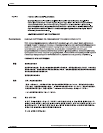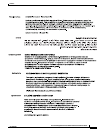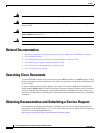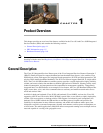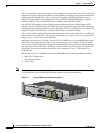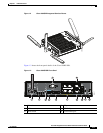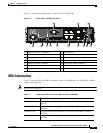
CHAPTER
1-1
Cisco 819 Integrated Services Router Hardware Installation Guide
OL-23125-02
1
Product Overview
This chapter provides an overview of the features available for the Cisco 819 and Cisco 819H Integrated
Services Routers (ISRs) and contains the following sections:
• General Description, page 1-1
• SKU Information, page 1-5
• Hardware Features, page 1-10
Note For compliance and safety information, see Regulatory Compliance and Safety Information Roadmap
that ships with the router and
Regulatory Compliance and Safety Information for Cisco 800 Series and
SOHO Series Routers.
General Description
The Cisco 819 Integrated Services Router, part of the Cisco Integrated Services Routers Generation 2
(ISR G2) Family designed in compact hardened and non-hardened form factors, is the smallest Cisco
IOS Software router with support for integrated fourth-generation (4G LTE) and third-generation (3G)
wireless WAN (mobile broadband backhaul). The 3G Cisco 819 now supports Dual 802.11 a/b/g/n radios
WiFi. The Cisco 819 ISR machine-to-machine gateway provides a rapidly deployable, highly available,
reliable, and secure solution into machine-to-machine applications for financial, telemetry, utility, retail,
industrial automation, and transportation with comprehensive management capability. Transparently
integrated into Cisco IOS Software as an enterprise-class feature, the Cisco 819 Hardened ISR provides
highly secure data, voice, and video communications to stationary and mobile network nodes across
wired and wireless links.
Available in both non-hardened (Cisco 819G) and hardened (Cisco 819HG) versions, the Cisco 819
supporting 4G LTE and 3G wireless WAN (WWAN) speeds offers a cost-effective, rapidly deployable,
reliable, and secure primary or backup solution. With support for industrial-grade components, the
hardened Cisco 819HG extends the ISR machine-to-machine gateway footprint and provides the
flexibility for deployment in many different stationary and mobile environments where space, heat
dissipation, exposure to extreme temperatures, harsher environments, and low power consumption are
critical factors. For mobile applications, Mobile IP delivers transparent roaming across multiple wireless
networks capable of covering wide geographic areas.



